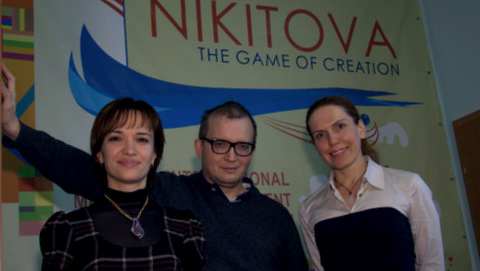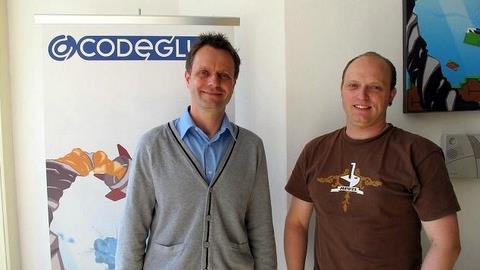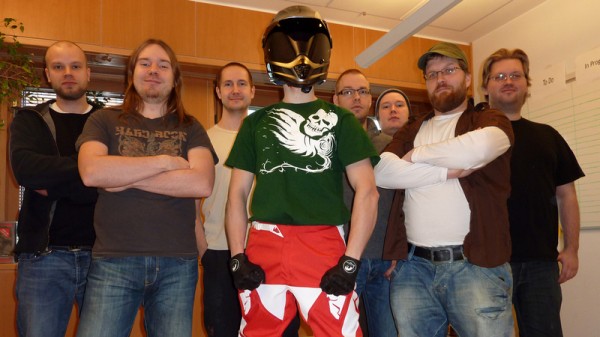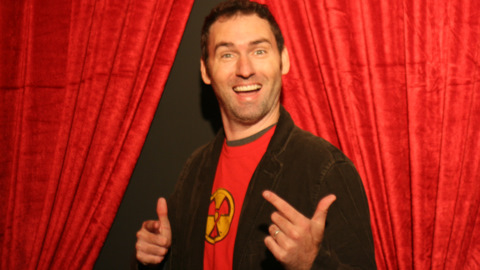Launched recently sandwiched in dire competition between Marvel’s Avengers Initiative and famed indie developer Terry Cavanaugh’s Super Hexagon, Yellow Monkey Studios’ Huebrix has been fighting for the attention its developers believe the game truly deserves. We sat down with Yellow Monkey Studios’ founder and game designer Shailesh Prabhu to talk about the recent launch of their game, the struggle to break out of India to reach a global market and putting Indian indie game developers on the global map.
Made in Mumbai
Huebrix’s success might also have a larger, unnoticed impact that many outside of India might be missing. It is giving many developers in India the hope they’ve always wanted: that it’s possible to reach a global audience outside of their own non-existing games market. ”We have now seen that if you get the game out there in front of people and they see a good solid game, they will take notice of you,” he argues. The game is being lauded by the local Indian game press as one of the few Indian games that reached out beyond its borders that the Indian game development community could be proud of. “The Indie Development scene in India is pretty nascent,” Prabhu says. “There are quite a few people who are interested and intrigued by the scene but not enough people actually doing proper work. We run a small Indie Game Development Facebook group here called LIGD; we have about 300 odd members, but maybe only 30 are active. Also, since the local market is virtually non-existent, most of the developers face the issue of actually reaching out and making their presence felt at the global level.”
Staying afloat
Yellow Monkey Studios has been around for over five years. During this time, four members of its team managed to work on three games and release them. In 2007, the studio started off designing and pitching a Nintendo DS based point-and-click adventure called Mortley - A Stitch in Time to many publishers. Regardless of the good response, many seemed to be quite skeptical that an Indian indie studio could complete and polish a game for the DS. “Most publishers ended up telling us to complete the game and then they would see, but that meant a $100.000 US dollars risk for us, and we didn’t have that money,” he says. The launch of the Apple App Store around that time meant a new opportunity for the team and they quickly decided to move to developing games for iOS. The first project to come out of that endeavor was Finger Footie, a top view flick-based Soccer game. Like many other game developers, the team had to struggle to get the game some visibility. So for their second game, Shailesh and his team decided to do something that would definitely catch people’s attention.
The resulting game was It’s Just a Thought, which won them the “Best Original Idea” at the HoPlay 2011 video games festival in Bilbao, Spain. Yellow Monkey studios has been financed in the only possible way most aspiring game studios in Asia are able to: work for hire jobs. “We’ve had to go back to work for hire in between projects or sometimes even during them to pay the bills,” says Prabhu. “The award at HoPlay 2011 with It’s Just a Thought had a cash component to that which, along with the work-for-hire project we did, helped us stay afloat during the production of Huebrix.” Though sales for Huebrix are still growing, the game enjoyed a steady climb up both the iOS and Android charts and has pretty much covered its development costs. Shailesh and his team were recently able to attend their first ever game conference back in May this year, volunteering at the inaugural edition of Casual Connect Asia in Singapore. The event gave them their very first chance to show Huebrixto publishers and meet other international game developers. But after disappointing leads, they decided to release the game themselves after all.
“We don’t have any publishers who take games developed here to the global market and we don’t have any internationally-acclaimed game development awards or more than one conference here,” Prabhu tells. “Even in the age of the internet, I think people really do value you more if they know you and can put a face to an email ID. It’s financially not possible for us at this point to travel to all these conferences to be seen, but we are trying to do whatever we can.” And until now, that effort to establish direct and strong relationships with the international press has not been in vain.
‘Hindi’ PR at its best
Regardless of all trials and tribulations, Huebrix has become an important milestone for the Indian indie game development scene for reaching the global mobile market, setting higher standards for a game’s level of polish and achieve outstanding recognition by game media from all over the world. They also recently spoke about their journey developing and promoting Huebrixat India’s prime game conference, the Nasscom Game Developers Conference in Pune, India.
Prabhu and his team simply did what any indie developer would, and should do. They involved a blogger in game development, and he made their work noticeable by actively posting about their development process. “I think staying active on these channels helped us get noticed by the right people at Apple and we have been able to get on the New and Noteworthy sections on launch day, and even get some promotional banners in some places,” Prabhu agrees. “That helped greatly with downloads. Besides that, we did press releases and had a proper media kit and promo codes ready for anyone who wanted to write a review. We sent those things out in advance specifying the release date and such. We didn’t really have any budgets for promotion.” But that didn’t stop them from being smart about PR & marketing. They were able to involve the well known and beloved indie-friendly PR expert Joseph Lieberman from VGSsmart glory, who assisted Yellow Monkey Studios in writing and spreading their press releases to the right media outlets. “He really loved the game and wanted to help us.” So far Yellow Monkey Studios’ efforts bore all the fruit they’ve hoped for. “We have risen to Rank 73 in iPhone games and Rank 28 in iPad Games on the iOS App Store, and we hope Huebrix will rise even more,” Shailesh says. “It is actually tough to launch on the same day as Avengers and Terry Cavanagh’s game Super Hexagon, but I hope we will still be seen by enough people.” Prabhu and his team also spread the word of the iOS and Android versions by getting a Flash version of Huebrix published on as many flash game portals as possible. Huebrix has been submitted to IGF China and the international IGF as well, and the game also became a finalist in the ‘Best International Game’ category for the Freeplay Awards 2012 held in Melbourne, Australia.
Huebrix’s statistics till this week have been around the following numbers Prabhu and his team were gracious enough to share with us:
iOS: 22k+ sales
iOS ratings: average of 4 out of 5 Stars
Android: over 600k Downloads confirmed by their Android-focused publisher.
Google Play ratings: 4.4 out of 5 Stars
Huebrix’s Flash version:
• 187k+ plays on Kongregate • 207k+ plays on Armor Games
• 38k+ plays on Newgrounds
Flash version ratings
• 3.7/5 (Kongregate) (9100 ratings)
• 4/5 (Newgrounds) (1500 ratings)
• 7.6/10 (Armor Games)
Following features on many popular mobile game websites such as PocketGamer.co.uk and being mentioned on TheGuardian.co.uk, reviews are also appearing on Appspy.com and TouchArcade.com. Huebrix even received a review on EDGE Magazine’s website (a 7/10), marking another giant step for the little Indian indie game studio. Though Huebrix’s Metacritic just went up to 76/100 (it was 74/100 a few weeks before), the young developers at Yellow Monkey are obviously overjoyed by the attention their game has been receiving.
Not the very first, but certainly not the last
Yellow Monkey Studios is currently planning their next title and have launched a major update for Huebrix today. They’re also adding a cool new update to Huebrix today that enables ‘Zen Mode’, a special mode for Color Blind people and the much delayed iPhone 5 graphics. Check out Huebrix for yourself here for iOS and here on Google Play.



















